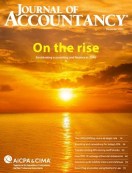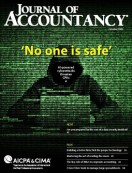- newsletter
- Cpa Insider

The financial and human cost of loneliness in retirement
Help senior clients who are feeling isolated.
Please note: This item is from our archives and was published in 2020. It is provided for historical reference. The content may be out of date and links may no longer function.
Related
How to guard client finances against dementia
Government report finds deficiencies in most US hospices
Planning for Medicare taxes, premiums, and surcharges
Social isolation and loneliness are not topics most CPA financial planners focus on when working on a client’s retirement plan, but they are important to address. Isolation and loneliness can have serious emotional, social, and financial consequences, and can contribute to declines in clients’ physical and mental health and quality of life.
Our clients are aging, and various factors associated with aging can lead to social isolation. Older people can become isolated if their health makes it difficult to leave the house or if their partners die. They often become caregivers when their partners develop chronic health conditions such as Alzheimer’s disease or other dementia, and the demands of caregiving can lead them to feel very much alone. Older people can also find themselves in a smaller social circle as family and friends begin to age and die or are no longer able to travel easily for a visit.
The financial costs of social isolation
Until recently, social isolation and loneliness were considered purely qualitative factors when it came to retirement satisfaction. They were not something that could be measured with dollars and cents.
New studies have begun to measure the financial cost of social isolation and loneliness. In a 2017 AARP study, the cost to Medicare of social isolation and loneliness was estimated at $6.7 billion annually. Specifically, the increased cost was due to the higher health care costs of socially isolated and lonely seniors. Loneliness can be a risk factor for certain chronic health conditions, such as arthritis, high blood pressure, heart disease, and diabetes.
The AARP study also found that socially isolated beneficiaries were 29% more likely to need care from a skilled nursing facility. A stay in a skilled nursing facility can be especially costly to a Medicare beneficiary because Medicare coverage of such stays is limited.
Social isolation and loneliness also can increase health care costs for clients. By its very definition, social isolation assumes a lack of nearby family, close friends, or a faith community that can step in and provide care at little or no cost, and so a socially isolated client is more likely to need custodial care.
Social isolation can also make the client more susceptible to elder financial abuse. Perpetrators of such crimes can more easily take advantage of the isolated elderly.
What CPAs can do about clients’ loneliness
Knowledge of a client’s financial situation for retirement planning is a given. But what about the client’s social situation?
As your client ages, their physical, cognitive, and social situation changes. Understanding how all three impact your ability to work with your client is essential if you are going to continue providing excellent service. Here are some practical tips:
- If an older client is single, is a caregiver, or has recently lost a partner, express concern about any feelings of social isolation and loneliness. Clients will usually appreciate the gesture, and you can gain insight into their situation.
- Realize that clients may need you to adopt a different communication strategy. As clients age, they may need more frequent contact and follow-up to ensure they understood your planning recommendations and how to proceed with implementation. This is not to say they are any less capable of understanding you. It is instead recognizing that older clients are more likely to feel lonely and may have increased anxiety and depression that makes it harder for them to participate fully in the planning process.
- Recognize if a client is in danger of becoming or is already lonely. Some places to start learning about the signs include the U.S. government site maintained by the Health Resources & Services Administration on the loneliness epidemic and the U.K.-based Campaign to End Loneliness‘s report, Hidden Citizens: How Can We Identify the Most Lonely Older Adults?.
- Improve your interpersonal skills so you feel comfortable raising the issue with your clients. We are not suggesting that CPAs can diagnose or cure a client of loneliness. However, CPAs can help such clients by creating a supportive environment and asking the client, especially if they just recently lost a spouse or long-term partner, how they are dealing with the loss. Some resources include Pauline Boss’s book Ambiguous Loss: Learning to Live with Unresolved Grief and the article “Ambiguous Loss: Helping Clients To Grieve Even Before a Loved One Passes Away.”
- Encourage your client to seek help. Local social services agencies will have resources for lonely elders. Some Medicare Advantage plans offer resources and programs to help alleviate loneliness. For example, Optima Health offers fitness programs (which encourage not only fitness but also social connections), hearing aids every three years (to prevent social withdrawal), and virtual appointments with counselors. CareMore hosts the “Togetherness” program, in which volunteers serve as “phone pals” or friends over the phone.
- Observe and listen for signs of financial abuse. In many states, CPAs are required to alert local authorities if they suspect elder abuse — financial or otherwise, so check your state’s laws. One of the best ways to uncover financial abuse is to ask questions and listen carefully to your client. Ask if they have anyone new helping them with their finances, and if they say yes, ask about the exact role of the person in regard to the client’s financial affairs. Does the individual have signatory power on any accounts? Has the person been granted a power of attorney? Ask for permission to have a conference call with the client’s attorney to discuss any recent activity. In other words, be proactive with your clients to help reduce the chance of financial abuse!
Find more information on how to advise your clients in The Adviser’s Guide to Retirement and Elder Planning (available to AICPA PFP/PFS members), including two parts — financing retirement health care and life transitions —authored by James Sullivan, CPA/PFS. Learn more about preventing elder financial abuse on the PFP Section’s Elder Planning and Life Transitions After Retirement page.
James Sullivan, CPA/PFS, is a financial planner in Wheaton, Ill. He specializes in working with clients suffering from chronic illness and their families. Julie Papievis is the community outreach coordinator with Romanucci & Blandin, a national law firm based in Chicago. She is also a popular speaker on the physical, emotional, and financial impact of traumatic injury. She tells her story in her book Go Back and Be Happy. Her website is gobackandbehappy.com. To comment on this article or to suggest an idea for another article, contact senior editor Courtney Vien at Courtney.Vien@aicpa-cima.com.



















